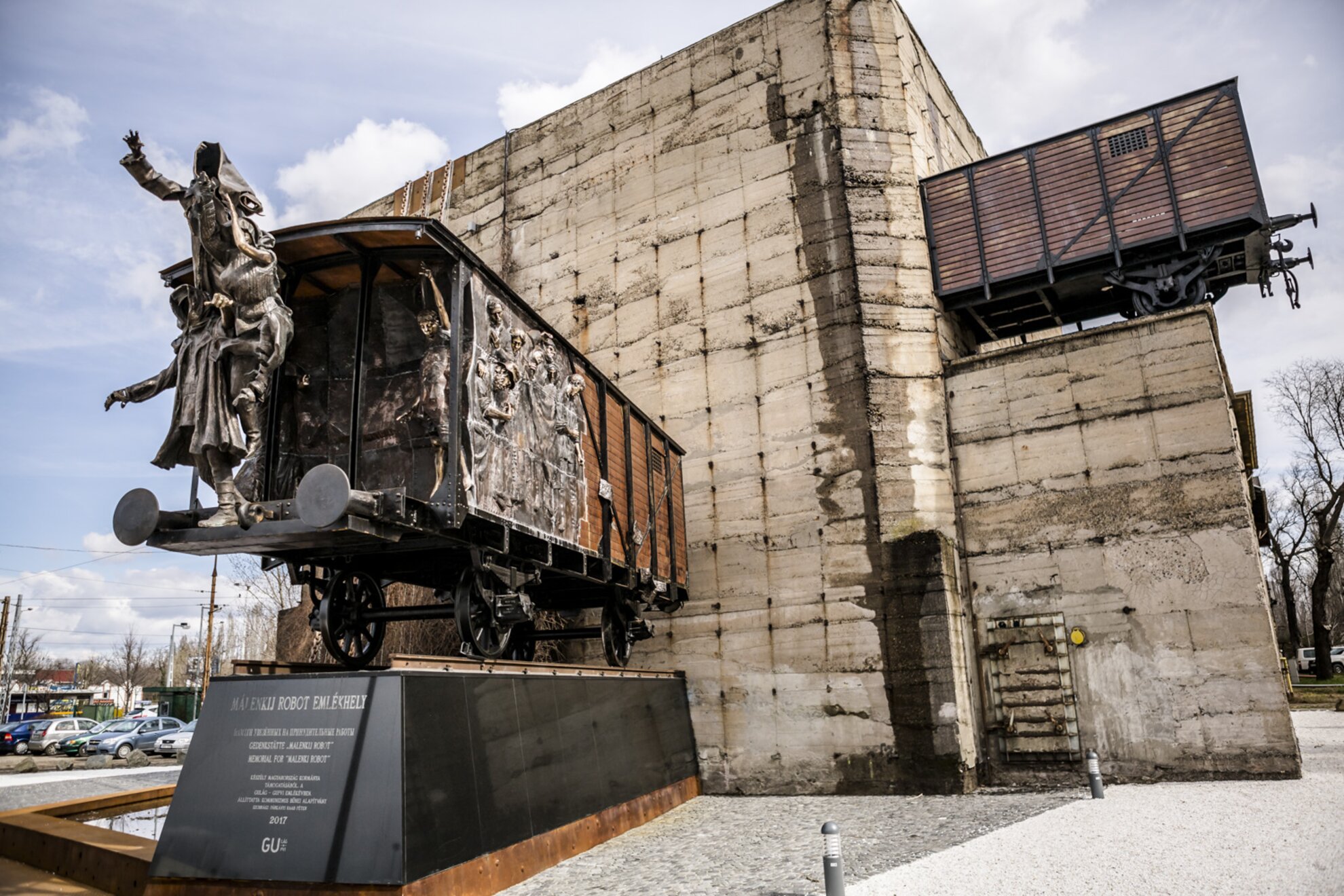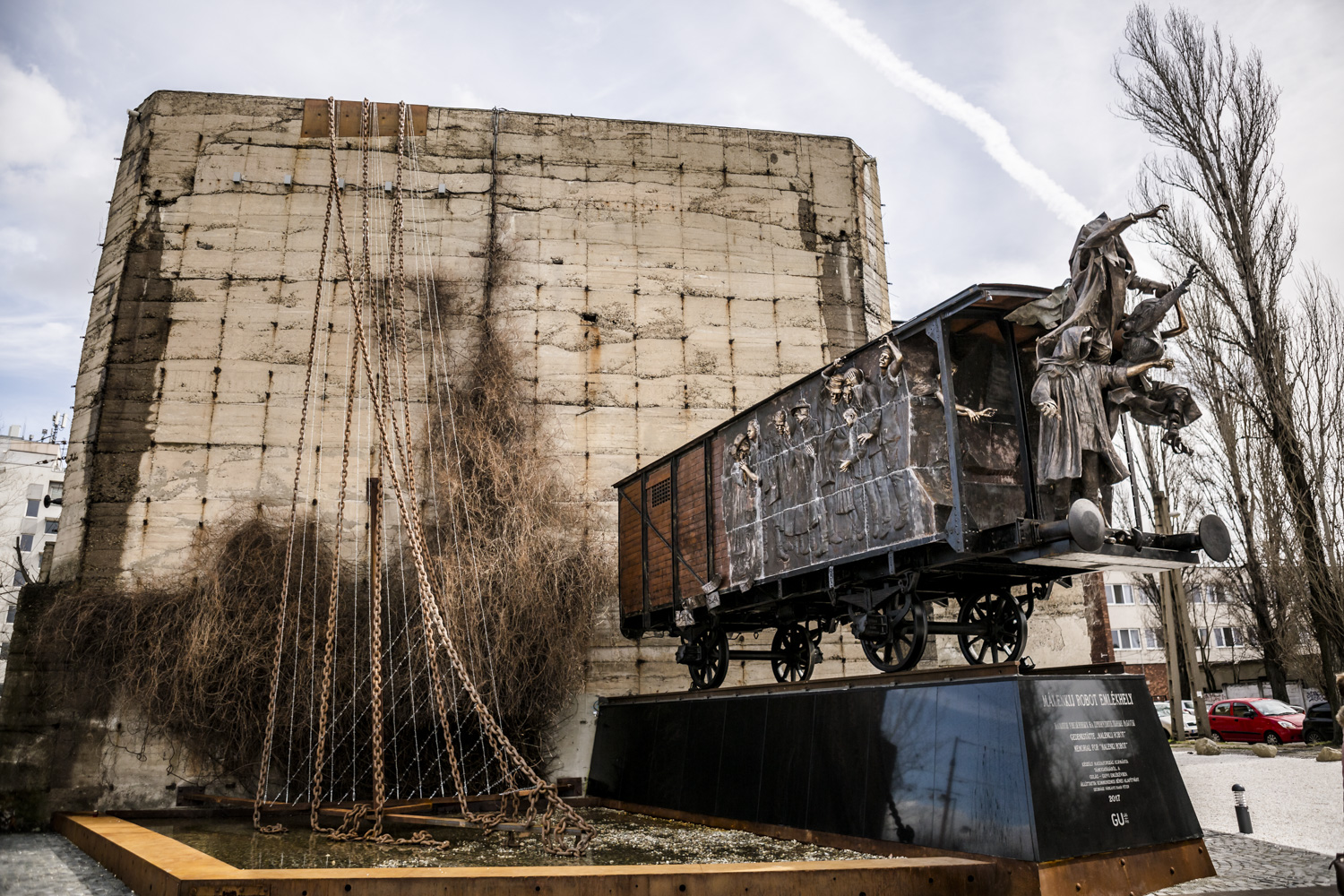This enormous memorial to the “Málenkij robot” workers was handed over in the area between the Budapest-Ferencváros Railway Station and the Könyves Kálmán Boulevard on February 26th, on the occasion of the Victims of Communism Memorial Day. The public work of art was created by Péter Raab Párkányi, who also sculpted the controversial memorial to Hungary’s victims of the German occupation at Szabadság Square, and architect Gábor Birkás, as a symbolic closure of the Gulag memorial year set up by the Crimes of Communism Foundation. The complex, made out of a former MÁV concrete bunker and sculptures, commemorates the “300,000 Hungarians deported without trial” and “all victims of the ‘Málenkij robot’, or the victims of the Soviet labor camps, from the Carpathian Basin”. The choice of location for the memorial is significant, since many detention-center-bound trains passed through this District IX railway station during the ’40s.

We can approach the memorial from the Hungária ring road – the area can be reached by taking tram 1 to the “Ferencváros vasútállomás” stop. The view is dominated by the massive, four-story concrete block with two halves of a freight car hanging out of its sides, at approximately seven meters high. The indestructible concrete cube is a railway shelter from 1962 with 2-meter-thick walls reinforced with lead plates, and with a capacity for 3,000 people. (Further development plans of the memorial include the establishment of a museum inside.) The main artwork of the installation seems to be the railway carriage combined with sculpture groups in the foreground of the memorial. Beside it, a waterfall of rusty chains and barbed wires is “falling” from the roof of the 55-year-old concrete bunker to a metal basin. The sculptor told us that this part will be complemented by a real waterfall in the near future.

The installation gives us a virtual insight into the wagon in the center; the pained and distressed looks of the victims, coming from various social strata, follow us as we circle around. The sculpture also immortalizes the phenomenon of the so-called “wind mail”: the captives tried to send messages to their loved ones – including details about where they were and where their destination was – by throwing notes on scraps of paper out of the windows. (Some family members and friends of these people followed the trains all the way to Záhony, a town located near the Ukraine-Hungary border.) The sculptor inscribed messages on bronze scraps such as hug, peace, hope, prayer, faith, love, and home. The three main figures at the front of the wagon symbolize the people who never returned from the labor camps. The sculpture is surrounded by gravel, small stone cubes, and wooden planks, interrupted by a row of rusty benches for quiet contemplation. The chugging of the trains passing by in the background breaks the silence, adding another dimension to the experience. The creators intended the memorial, which was completed in less than three months, to be the most expressive in the late hours of the day, when it’s illuminated by floodlights.Between 1944 and 1945, Hungarian civilians deemed as “enemies of the system” were rounded up by the occupying Soviet forces and deported to labor camps in the Soviet Union. This phenomenon has been referred to as “Málenkij robot”, a corrupted form of the Russian expression “little work”. The first and largest wave of deportation occurred in Budapest, where some 100,000 civilians were gathered. Most victims never returned home; they didn’t survive the inhumane conditions in the camps, the lack of hygiene, the malnutrition, the demanding work, and the total hopelessness. The original plans for the memorial featured the names of all 2,000 affected settlements in the Carpathian Basin, but due to physical restrictions, this detail was omitted.





